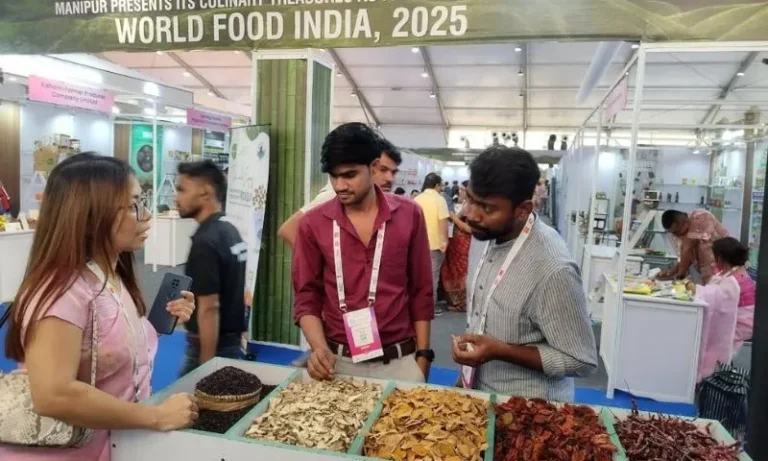When Did Violence Become the Only Language Spoken in Manipur?
Summary of the Issue
Manipur, a state with a history of rich cultural harmony, is now grappling with persistent violence that seems to have become the dominant mode of communication in resolving disputes. Recent incidents, particularly those arising from ethnic, political, and socio-economic tensions, have highlighted a growing reliance on violence to address grievances. These issues are rooted in decades of unresolved conflict, a lack of effective governance, and policies perceived as divisive. Civil society, intellectuals, and various organizations are calling for systemic reforms and dialogues to restore peace and harmony.
A Deep Dive into Manipur’s Crisis: Why Violence Dominates
Introduction
Have you ever wondered how a region known for its cultural vibrancy could descend into such turmoil? Manipur’s current plight is not just about sporadic violence; it reflects a deeper, systemic failure to address root causes. From ethnic rivalries to political opportunism, the state’s challenges are many, and the solutions seem elusive. But how did it come to this? Let’s break it down.
The Roots of the Problem
1. Ethnic Divisions
Manipur is home to various communities, including Meiteis, Kukis, and Nagas, among others. While diversity is a strength, unresolved historical tensions have turned it into a point of contention. The overlapping territorial claims, especially concerning land rights in hill and valley areas, fuel conflicts.
- Meiteis vs. Hill Tribes: At the heart of the disputes are the policies perceived to favor the valley-dwelling Meiteis over the hill tribes. These grievances have escalated into violent clashes over resources and representation.
2. Political Instability
Political decisions and delays in addressing pressing issues exacerbate tensions. Policies, such as the enforcement of the Inner Line Permit (ILP), aimed at protecting indigenous communities, are often seen as divisive by different groups. Critics argue that these policies deepen divides instead of fostering unity
3. Socio-Economic Inequalities
The state’s uneven development adds another layer of complexity. Hill districts often feel neglected in terms of infrastructure, healthcare, and education, creating a sense of alienation. Violence becomes a tool for communities to assert their demands in the absence of dialogue
.
The Turning Point: A Culture of Retaliation
In recent years, Manipur has witnessed a surge in violent incidents that are both retaliatory and preemptive. Whether it’s inter-tribal skirmishes, attacks on government facilities, or targeted killings, violence seems to have replaced dialogue. Experts point out that the normalization of such actions stems from a lack of accountability and weak law enforcement.
The Role of External Factors
External influences, including armed groups operating in the region, further complicate the situation. Their involvement often shifts the focus from resolving grievances to pursuing power struggles.
The Human Cost
Beyond the statistics, the human toll is immense. Families displaced, children losing access to education, and communities living in perpetual fear have become the norm. The emotional scars run deep, and rebuilding trust will require more than just policy changes.
The Path Forward: Can Dialogue Triumph Over Violence?
1. Empowering Civil Society
Civil organizations play a critical role in bridging gaps between communities. Strengthening these groups and giving them a platform to mediate disputes can foster trust and reduce violence.
2. Inclusive Governance
Governance that prioritizes the needs of all communities can restore faith in the system. Policies should aim at equitable development, ensuring that no group feels left behind.
3. Conflict Resolution Mechanisms
Manipur needs formal structures for conflict resolution that involve all stakeholders. These should focus on dialogue, compromise, and mutual respect.
4. Addressing Underlying Issues
The government must take proactive steps to address socio-economic disparities. Investing in hill areas, improving access to resources, and creating opportunities for all communities can reduce tensions.
Conclusion
Manipur’s story is a stark reminder of what happens when grievances are ignored and divisions are allowed to fester. Violence might provide short-term relief to some groups, but it destroys the social fabric in the long run. The state’s future depends on its ability to embrace dialogue over violence, unity over division, and development over neglect.
FAQs
- What are the main causes of violence in Manipur? The violence stems from ethnic rivalries, political instability, socio-economic inequalities, and external influences like armed groups.
- How does the Inner Line Permit system affect Manipur? While it aims to protect indigenous communities, critics argue that it exacerbates ethnic divisions by favoring certain groups.
- What can be done to reduce violence in the state? Solutions include fostering inclusive governance, empowering civil society, addressing socio-economic disparities, and creating formal conflict resolution mechanisms.
- Why are hill and valley areas often in conflict? The tension arises from resource allocation, land rights disputes, and perceptions of neglect by the hill communities.
- What is the role of civil society in resolving Manipur’s crisis? Civil society can act as a mediator, promoting dialogue and trust among conflicting groups.


